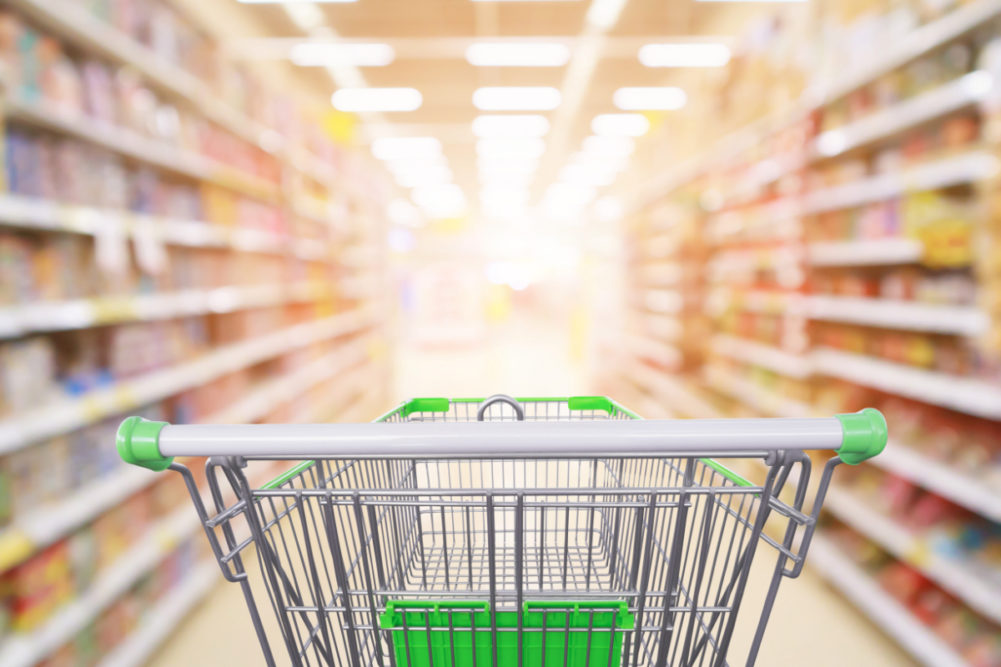CHICAGO — Lessons from the 2008 recession may help companies shape their innovation strategy in the wake of the coronavirus (COVID-19) pandemic.
Key themes that emerged during the Great Recession include premiumization, larger pack sizes and brand expandability, according to data from Information Resources Inc. (IRI)’s 2008-2010 New Product Pacesetter reports.
“People think in recessionary times that people are not going to spend money, but it’s a tradeoff in dollars,” said Larry Levin, executive vice president, market and shopper intelligence at IRI. “Maybe I used to go to dinner at restaurants and spend $70 or $80 on dinner for the family, but now I do a frozen meal that is a premium product relative to its competitive set in the frozen aisle. It might be more expensive, but the mental trade was going to the restaurant or feeding people at home.”
Higher quality entrees from Conagra Brands, Inc., including Marie Callender’s Home-Style Creations and Healthy Choice All Natural, found success by offering an elevated in-home experience. K-Cups, which began their explosion just as the recession hit, similarly offered an opportunity to create a cafe experience in the kitchen.
Multi-serving products, including Bertolli oven bake meals, Stouffer’s Easy Express and P.F. Chang’s family size frozen meals, also saw growth during the recession.
“They allowed people to serve a bigger family or serve on a couple of occasions,” Mr. Levin said. “Being able to create that extended use was really critical for a lot of consumers.”
Large CPGs struggled with new products in popular, high penetration categories during the Great Recession but found success by pushing brands into adjacent categories or increasing offerings. Examples include Kellogg Co.’s Special K snack bars, new Gatorade and Powerade offerings from PepsiCo, Inc. and The Coca-Cola Co., and Starbuck Corp.’s VIA instant coffee.
The 2020 recession
Larger pack sizes and restaurant-quality experiences already have emerged as major themes in 2020, and lingering concerns about the pandemic will likely sustain the underlying shift toward at-home eating.
“In our weekly tracking study, 65% of Americans say they're going to take a ‘wait-and-see’ attitude about going back to restaurants,” Mr. Levin said. “Of that 65%, a significant portion said they’re not going for a few months, let alone a few weeks.”
A new challenge is that consumers also are spending less time in stores. More than a third of shoppers said they have stopped looking for new products in recent months, and a quarter reported rushing to spend less time in stores.
“They're coming to the store in a get in and get out mindset,” Mr. Levin said. “How do you make sure you have the right marketing message, because they might miss you coming down the aisle? This is going to create new ways of winning the hearts and minds of shoppers for new products to break through.”
Focusing on attributes that matter most to consumers, like self-care, will be critical going forward.
“This is an environment that's got a two-pronged devil,” Mr. Levin said. “We've got coronavirus on one end, and we’ve got financial collapse on the other end. Manufacturers have an opportunity to create better-for-you products that serve the same need you might get from a supplement.”
Opportunities also exist for products that cater to mental and emotional well-being.
“We’ve seen a growth in CBD sales over the last couple of months,” Mr. Levin said. “People might be looking to CBD as an alternative to making it through this very stressful time, and it can be easier to access online.”
A cause for optimism
Smaller manufacturers and emerging brands were more successful than medium and large companies during the Great Recession, despite having fewer New Product Pacesetters, according to IRI.
Products from pure players focused on high growth categories fared the best.
One example is Chobani, which saw its first Greek yogurt products hit shelves in 2007.
“When Chobani hit the market, it was about $1.40 per serving, while the industry was about $1,” Mr. Levin said. “Then people saw the assets of added protein and new texture, and they were willing to pay more money for that.”
Other successful new products launched during the Great Recession include multigrain pretzels and crackers from Snyder’s Lance, Almond Breeze almond milk from Blue Diamond and Ocean Spray’s On the Go drink mixes and Cranergy bottled juice.
“A lot of the small companies and brands that we saw in 2010 are here and powerful today,” Mr. Levin said. “They positioned themselves well for continued survival or acquisition, and I think that is a light at the end of the tunnel for some of these small manufacturers who might be worried right now. They can look back and see what others did during the last recession. They were able to survive and come through relatively well.”





